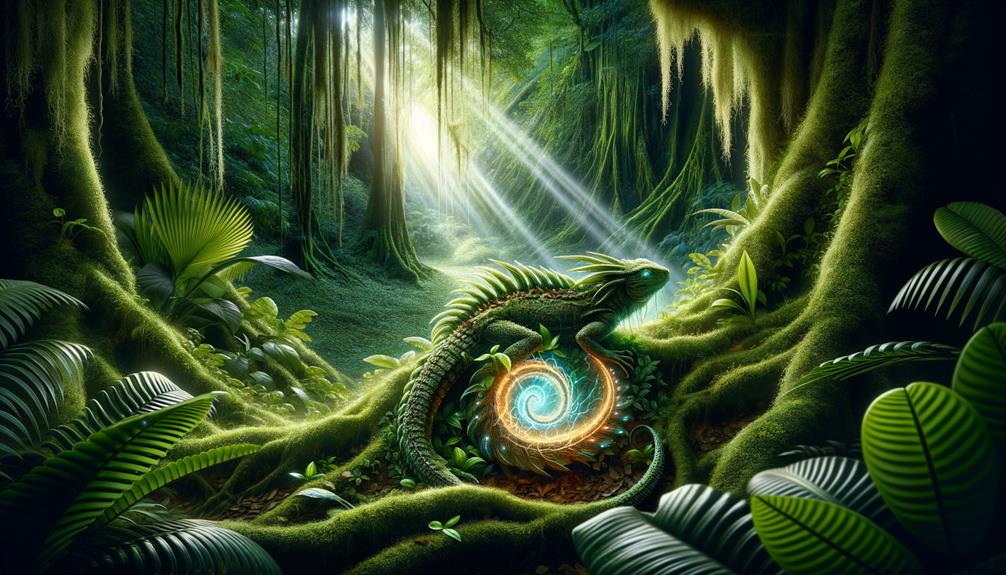Let's bust a myth about snake charming. Contrary to popular belief, snakes don't dance to the tune of a pungi. They're actually responding to the charmer's movements and the vibrations they feel. The music? It's just for show.
What's more concerning is how these animals are often mistreated. Some charmers remove snakes' fangs or sew their mouths shut – practices that are cruel and unnecessary. Governments have stepped in with regulations to protect these reptiles.
The good news is that snake charming is changing. It's moving away from entertainment and towards education and conservation. This shift is helping us learn more about snakes and how to treat them ethically.
As we dig deeper into this practice, we're uncovering its true nature. It's not the mystical art it once seemed, but rather a complex issue involving animal welfare and cultural traditions. By understanding the reality behind snake charming, we can make more informed decisions about how to approach it in the future.
Origins of Snake Charming
Snake charming's roots are often romanticized, but research shows it began in India millennia ago, deeply connected to Hindu beliefs and traditional medicine. In Indian lore, snakes are sacred and linked to deities like Shiva, Ganesha, and Vishnu. This cultural backdrop set the stage for snake charmers to become a unique, if controversial, part of Indian society.
Traditionally, snake charmers came from healer castes such as the Sapera or Sapuakela. They learned to handle snakes and treat bites from childhood, eventually turning these skills into entertainment and spiritual practices. However, it's worth questioning the supposed mystical aspects of their craft. Often overlooked is the practical knowledge of snake behavior these charmers possessed, which likely formed the true basis of their expertise.
The practice eventually spread beyond India to other parts of Asia, Africa, and the Middle East, with each region adapting it to local customs. Despite this expansion, the Indian origins and mythological ties remain central to snake charming's identity.
While the spectacle of snake charming might captivate audiences, it's crucial to consider the welfare of the animals involved and the scientific realities behind the performance. Modern understanding of snake behavior and ecology has shed new light on these practices, prompting discussions about conservation and animal rights.
The Role of the Pungi

The pungi's role in snake charming has always piqued my interest. This traditional instrument, with its distinct sound, doesn't actually affect the snake's hearing. Instead, the reptile responds to the movement and vibrations created by the charmer. This insight raises questions about the pungi's actual effectiveness in influencing the snake's behavior. Is it more for show than for control? Perhaps the instrument serves to create an atmosphere or distract onlookers while the charmer employs other techniques. Understanding the true purpose of the pungi in this age-old practice could shed light on the complexities of snake charming and possibly dispel some common misconceptions.
Traditional Musical Instrument
The pungi, a wind instrument deeply rooted in tradition, is often associated with snake charming performances. Many believe its haunting melodies mesmerize serpents, but this notion warrants closer examination. While the pungi's role is undeniable, it's worth considering other factors at play in this ancient practice.
Let's examine the key components:
| Component | Description | Function in Performance |
|---|---|---|
| Pungi | Reed instrument producing continuous sound | Believed to entrance the snake |
| Charmer's Movements | Rhythmic swaying and gestures | Captures the snake's attention |
| Snake Handling | Physical control techniques | Ensures safety and directs behavior |
The charmer's movements and snake handling techniques appear equally crucial, if not more so, than the pungi itself. The coordinated swaying and expert manipulation likely influence the snake's behavior more than the music alone.
Although the pungi contributes an auditory element to the performance, attributing the snake's actions solely to the instrument oversimplifies a complex interaction. A more nuanced analysis reveals an intricate interplay of factors, casting doubt on claims of the pungi's supposed mystical influence.
This traditional art form, while culturally significant, raises questions about the true nature of snake behavior during these displays. As we peel back the layers of this practice, it becomes clear that the relationship between music, movement, and animal behavior is far more intricate than initially assumed.
Sound and Snake Behavior
Contrary to popular belief, it's not the pungi's melody that mesmerizes snakes. The reptiles actually respond to the charmer's movements and the resulting vibrations. Lacking external ears, snakes can't hear the instrument's high notes. Instead, they rely on their keen sense of vibration and motion. The charmer's swaying and pungi manipulation create tremors that the snake detects, interpreting them as either a threat or potential prey.
This behavior can be broken down into several key aspects:
- Vibration Awareness: Snakes are incredibly attuned to vibrations, explaining why they react to movement rather than the pungi's sound.
- Visual Cues: The charmer's hand and arm motions provide visual stimuli, prompting the snake to follow and react defensively.
- Wild Instincts: In nature, snakes react similarly to vibrations from rustling leaves or approaching predators, not to sounds.
- Common Misunderstanding: The notion that snake charming involves hypnotizing the snake with music is false; the charmer's coordinated movements drive the response.
Crafting the Pungi
The pungi, a traditional Indian instrument, plays a crucial role in snake charming performances. Crafted from a hollowed-out gourd with a single string, this tool produces high-pitched, nasal sounds that interact with a snake's natural instincts.
Contrary to what many think, snakes can't hear music. The pungi's purpose isn't to create a tune, but to generate vibrations. These vibrations mimic the sounds of a predator, causing the snake to raise its hood defensively. This reaction forms the basis of the captivating snake charming display.
Snake charmers use the pungi to manipulate the snake's movements, creating a spectacle that's more about understanding animal behavior than mystical powers. The repetitive, rhythmic patterns played on the instrument build tension and drama, drawing in audiences.
Snake Behavior Explained

The notion that snakes react to music doesn't hold water. These reptiles can't actually hear the flute's melody; their response is based on sensing vibrations and watching the charmer's actions. When you see a cobra with its hood raised, it's not putting on a show – that's a defensive stance, pure and simple. Snake charmers have long capitalized on this natural behavior, creating the illusion of serpents swaying to a tune. In reality, it's just snakes doing what comes naturally when they feel threatened. Understanding these facts helps us appreciate snakes for what they are: fascinating creatures with their own set of instincts and behaviors, rather than exotic dancers responding to a magical melody.
Snake Hearing Limitations
Snake charmers don't actually hypnotize snakes with music, despite what many people think. The truth is, snakes can't hear airborne sounds like we do. They don't have outer ears or eardrums, so they rely on ground vibrations instead. This fact challenges a lot of what we thought we knew about snakes, especially when it comes to their supposed love of music.
Let's break it down:
- Snake Hearing: Snakes pick up low-frequency vibrations through their jawbones. They're feeling these vibrations rather than hearing them like we do.
- Visual Cues: These reptiles are more likely reacting to the movements of the charmer and their instrument, not the tune itself.
- Venomous Snake Behavior: Even cobras aren't swaying to the music. They're often just stressed or on the defensive, reacting to the charmer's movements.
- Debunking Old Ideas: The image of snakes dancing to music is more fantasy than fact. Understanding how snakes actually sense their environment helps us see snake charming for what it really is – a performance based more on movement than sound.
Movement Over Music
Snake charmers don't actually hypnotize snakes with music. The truth is much simpler: snakes react to movement, not sound. These reptiles lack external ears, so they can't hear the charmer's flute at all. Instead, they pick up vibrations through their bodies.
When you see a cobra rising up and swaying, it's not dancing to a tune. It's actually on the defensive, reacting to the charmer's motions. The snake focuses on the person's swaying body and the vibrations they create, not any melody. This makes sense when you consider that snakes are cold-blooded creatures, whose behavior is shaped by external factors like motion and vibration.
Defensive Posturing Explained
Snakes often get a bad rap, but their defensive behaviors are more about self-preservation than aggression. When feeling threatened, these reptiles don't immediately attack. Instead, they put on a show to scare off potential dangers.
Watch for these warning signs:
- Cobras puff up their necks, making themselves look bigger and scarier.
- A hissing sound means the snake's feeling uneasy and wants space.
- Rattlesnakes shake their tails, creating that famous buzz as a warning.
- Some snakes pretend to strike without opening their mouths, hoping to bluff their way out of trouble.
These actions show snakes would rather avoid a fight. The Wildlife Protection Act aims to protect these often misunderstood creatures, recognizing their importance in nature. By learning about these defensive displays, we can better appreciate snakes for what they are: fascinating animals just trying to survive.
Understanding snake behavior helps bust common myths. It's not about fear or aggression – it's about respecting these remarkable reptiles and their role in our ecosystems. Next time you spot a snake showing off, remember: it's probably more scared of you than you are of it.
Safety Practices

Snake charming safety is a contentious issue, balancing risk reduction for performers with animal welfare concerns. Many practices used to protect charmers are harmful to snakes. Common methods include:
- Removing fangs
- Disabling venom glands
- Using non-venomous species
These approaches, while reducing immediate danger, often cause long-term health problems for the snakes.
| Technique | Goal | Ethical Issue |
|---|---|---|
| Fang removal | Prevent bites | Pain, infection risk |
| Venom gland disabling | Stop venom production | Chronic health effects |
| Non-venomous substitutes | Increase safety | Misrepresentation |
Snakes are frequently kept in small containers, causing stress to these cold-blooded animals. Dehydration and poor environmental control worsen their condition. Some performers even sew snakes' mouths mostly shut, leaving only a small opening for the tongue – a cruel and dangerous practice.
The handling methods raise significant ethical questions. While they may lower immediate risks, they severely impact snake well-being. This industry requires careful examination and reform, especially for those who value animal rights and humane treatment.
Cultural Significance

Snake charming runs deep in Indian culture, with roots in age-old customs and snake worship in Hindu myths. This practice, which spans millennia, isn't just about entertaining crowds; it's steeped in religious and cultural meaning.
In Hinduism, snakes are tied to major gods like Shiva, Ganesha, and Vishnu. You'll often see these deities with serpents, highlighting the sacred role snakes play in the faith.
The Naga, mythical beings that are part human, part snake, hold a special place in Hindu beliefs. Their godlike status underscores how important snakes are in the culture.
Back in the day, people saw snake charmers as more than performers. They were thought to be healers who could treat snakebites and other health issues, adding to their mystique and respect in society.
Despite the cultural significance, the Indian government has put strict rules in place to protect wildlife, including venomous snakes. This has changed how traditional snake charming is practiced.
While the cultural importance is clear, it's worth asking if these old traditions should continue unchanged in today's world.
Modern Perspectives

Snake charming has undergone a major shift in recent years. What was once mainly about entertaining crowds has transformed into a practice focused on education and conservation. This change marks a significant departure from the past, when the welfare of snakes often took a back seat to showmanship.
These days, snake handlers team up with wildlife experts to promote snake welfare and safety. Their goal isn't just to show off their skills, but to teach people about the crucial role snakes play in nature. A prime example is the rescue work done during India's rainy season. Snake handlers now play a key part in safely moving snakes that wander into populated areas, keeping both people and snakes out of harm's way.
But questions remain about whether this new approach can last. Striking a balance between tradition and modern ethics isn't easy. The future of snake handling depends on maintaining this delicate equilibrium. If done right, it could remain a unique part of Indian culture and tourism while putting the well-being of snakes and humans first.
Frequently Asked Questions
Why Was Snake Charming Banned?
I recently came across some information about this topic. The practice of snake charming was outlawed due to concerns over animal welfare and public safety. Governments took action to safeguard both the snakes and the general population, aiming to create a more ethically sound society. The ban reflects a growing awareness of the need to protect wildlife and ensure the well-being of both animals and humans in our communities.
Is Snake Charming Animal Abuse?
Snake charming raises serious ethical concerns. Many view it as a form of animal mistreatment. The snakes used in these displays often face harsh conditions, including having their fangs removed and being kept in cramped, unsuitable environments. While some argue it's a cultural tradition, others see it as a clear violation of animal welfare. The practice goes beyond mere entertainment, potentially causing real harm to these creatures. It's worth considering whether such shows align with modern values regarding animal rights and conservation.
Is Snake Charming Unethical?
Snake charming raises ethical concerns. This practice puts animals at risk for the sake of human entertainment, often causing them distress and physical harm. We should consider the welfare of all living creatures and question traditions that exploit them for our amusement. Perhaps it's time to rethink how we interact with wildlife and find ways to appreciate these animals without subjecting them to potentially harmful situations. By shifting our perspective, we can foster a more compassionate approach to animal welfare and entertainment.
What Is the Truth About Snake Charming?
Let's be clear: snake charming isn't some mystical art. It's a clever performance that relies on the snake's natural reactions to movement, not music. While it might look impressive, this age-old practice often involves exploiting and controlling these animals for entertainment. The snakes respond to the charmer's motions, creating an illusion of being 'charmed' by the melody. In reality, it's a well-rehearsed act that masks the less glamorous aspects of animal handling and showmanship.



